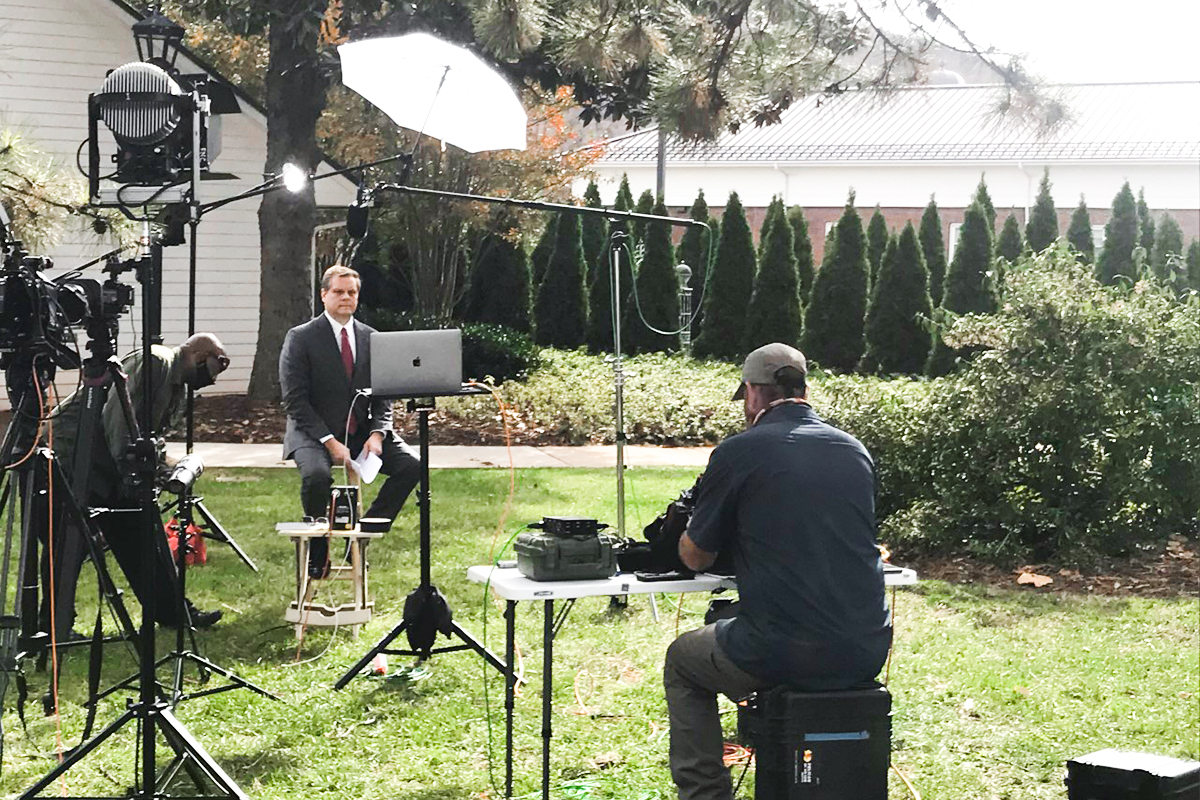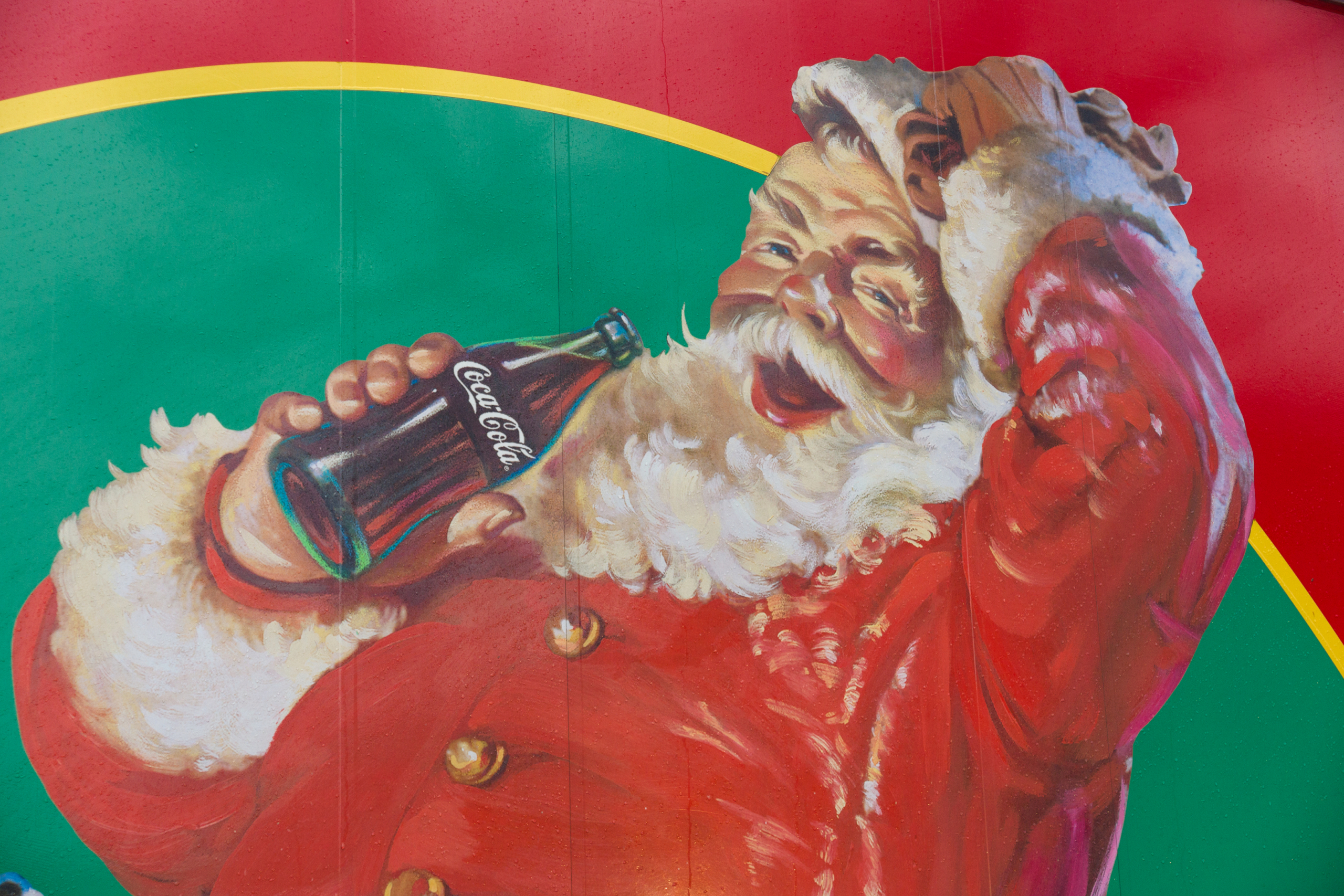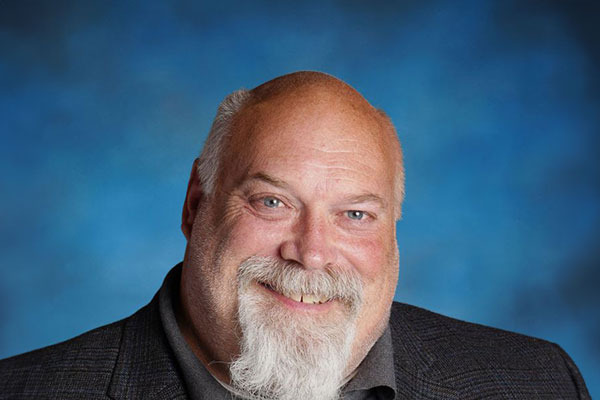Search News Archives
Filter News Articles
Additional Navigation
Liberty professor outlines history of Santa Claus and Christmas tradition in upcoming documentary
December 7, 2020 : By Ryan Klinker - Office of Communications & Public Engagement

As a featured guest in an upcoming Fox Nation documentary news segment outlining the history of Santa Claus and the Christmas holiday, Liberty University Department of History professor Dr. Carey Roberts is sharing how the man with the long white beard and red suit has changed with America’s cultural shifts.
Roberts was interviewed on campus last month for “The True St. Nicholas,” scheduled to air beginning on Dec. 14, and spoke specifically about how Christmas traditions merged in the mid-20th century.
“My role in the documentary is to explain the secularization of St. Nicholas into the modern Santa Claus, which really is a distinctly American contribution to the celebration of Christmas,” said Roberts, who also serves as the online dean for the College of Arts and Sciences. “My primary research interest throughout my career has been the evolution of American nationalism and culture, and I largely focused on early America but then stumbled upon the connection with Santa Claus in recent years.”
Roberts said the idea of Santa Claus as a gift-toting philanthropist for children first came to the United States as “Sinterklaas,” a Dutch character with a similar appearance who was celebrated by immigrants in the New Netherlands colony in what is now New York and the surrounding region. After mostly being localized in the Hudson River Valley until the 1890s and early 1900s, Santa soon became a figure in the Christmas season in New York City and later the world as the Big Apple became a global, cultural hub.

“As New York City became the centerpiece of American Christmastime celebration from the 1920s to the 1940s, so too did Santa Claus become a fixture of American tradition,” Roberts said. “Santa Claus is really a symbol of national unity that emerged between the World Wars and became pervasive around the country and the world by the 1950s.”
The Christian roots of Christmas have been part of American customs from the country’s early years, Roberts explained, but the manner in which it was celebrated varied by cultural region and used to be much more distinctive. Puritans in New England didn’t see it as a proper holiday due to its compartmentalizing of celebrating Jesus’ birth during a certain time period, while those in the South turned Christmas Eve into a “robust” celebration that Roberts likened to a combination of the modern Fourth of July and New Year’s Eve environment of fireworks and parties.
“Christmas was never a major holiday in New England and it was just cold and bleak,” Roberts said, contrasting it with today’s idyllic Christmas card image of a white Christmas in a small, cozy New England town. “In the South, Christmas was both a major celebration and coincided with a visit from Father Christmas, who was rooted in the European tradition of St. Nicholas.”
Roberts said that the “Christmas magic” that made the holiday more widespread came in the 1930s when a beverage company from the South, Coca-Cola, hired Swedish designer Harold Sunblom to create a national Christmas ad for the brand. His art featured the New York-rooted image of Santa Claus, a stout man with rosy cheeks and a large white beard that today has become the standard.

New Christmas carols that emerged at that time revived older Christian hymns about Jesus’ birth to create today’s annual soundtrack to the holiday season and keep the Christian meaning of Christmas ingrained in the celebration.
“This actually enhances the Christian roots of American Christmas — you have all of these secular people who start singing Christian hymns,” Roberts said.
In the 1940s and 50s, media played a large role in creating a commonality among Christmas tradition for families to celebrate.
“You combine this new image of Santa Claus with the release of several motion pictures that came out around World War II like “Miracle on 34th Street,” “The Bells of St. Mary,” and (other) Bing Crosby films that helped bring together the different regional traditions of Christmas, along with the marketing image from Coca-Cola, to produce the modern American Christmas.”


